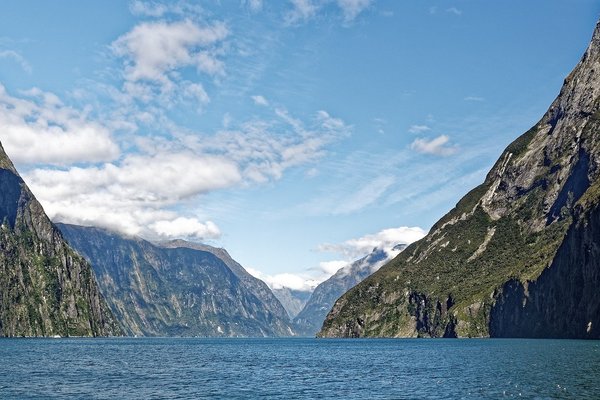New Zealand
Waters and seabed of Fiordland
The proposed extension consists of eight marine reserves protecting the waters of the fiords and the seabed along the coast within Fiordland National Park, which were not included within the Te Wahipounamu WHS when it was inscribed in 1990. The waters and coastline are a preferred breeding habitat for fur seals and seabirds, including petrels and penguins.
Site Info
Official Information
- Full Name
- Waters and seabed of Fiordland (Te Moana O Atawhenua) (ID: 5121)
- Country
- New Zealand
- Status
-
On tentative list 2007
Site history
History of Waters and seabed of Fiordland
- 2007: Added to Tentative List
- Added to tentative list
- Type
- Natural
- Criteria
Links
- UNESCO
- whc.unesco.org
All Links
UNESCO.org
- whc.unesco.org — whc.unesco.org
Community Information
- Community Category
- Natural landscape: Marine and Coastal
Travel Information
Recent Connections
News
No news.
Recent Visitors
Visitors of Waters and seabed of Fiordland
- alicemears
- Bram de Bruin
- Carlo Sarion
- Christoph
- Daniela Hohmann
- Erik Jelinek
- Femke Roos
- Francky D'Hoop
- Frederik Dawson
- Gabbro
- GabLabCebu
- Hadrianus
- Jakob F.
- Javier Coro
- Kurt Lauer
- Lucas Del Puppo
- MoPython
- nan
- Patrik_globe
- Pink Bunny
- Piotr Wasil
- Reiseblitz
- scubarrie
- Shandos Cleaver
- stephanvermeulen
- Thomas Buechler
- Tim Allen
- tony0001
- Tsunami
- Wo_ko
Community Reviews
Show full reviews
Wow, for the vastness of Fjordland National Park, let alone Te Wahipounamu, it's really surprising that the waters of the fjords themselves have been left out of the inscription. They are basically the essence of the fjord, and contain a unique but still connected ecosystem with the rest of the park. Many people, including myself visit this daily through the fjord cruises in Milford Sound. One would never expect the tip of the fjord to already be the sea, as steep cliffs and mountains, littered with hundreds of little waterfalls, block the views of the curving fjord. However, on the small outcroppings above the water, masses of seals cover the surfaces. The water all around is a deep dark blue, still a pristine environment for all the creatures we see and don't see. All in all, this site should be a very obvious and significant extention to the already majestic site of Te Wahipounamu, adding important, and unique yet relevant biological and geological value.
Keep reading 0 comments